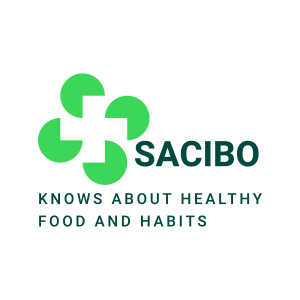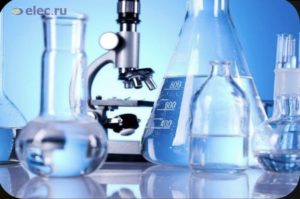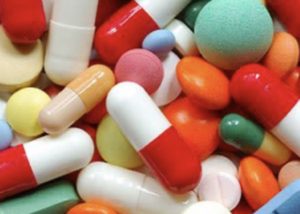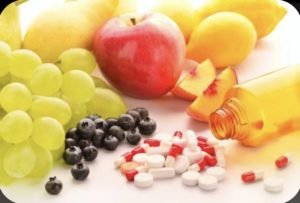- Home
- /
- Healthy Meal
- /
- Products
- /
- Water
- /
- Water and the Human...
- The Human Body’s Hydrous Essence
- Optimal Water Characteristics for Human Consumption
- Other less popular characteristics
- The WHO recommendations
- The Methods for Improving Water Quality: reliable and not quite
- What about enrichment with ozone?
- Ionization of water
- The Methods of Water purification: what are effective?
- The water conditioning methods
Water, the elixir of life, is an essential component of the human body. It plays a pivotal role in maintaining overall health and well-being. From regulating body temperature to facilitating vital biochemical reactions, water is indispensable for the proper functioning of our bodies. In this article, we will explore the profound connection between water and the human body, uncovering its crucial roles and emphasizing the significance of staying adequately hydrated.
The Human Body’s Hydrous Essence
Did you know that our bodies are predominantly made up of water? In fact, water constitutes approximately 60% of an adult’s body weight. Every cell, tissue, and organ in our body relies on water to function optimally. The brain, heart, lungs, muscles, and even our bones require water to carry out their respective roles effectively.
The Role of Water in the Body
1. Temperature Regulation
Water acts as a natural coolant for the body. When we engage in physical activity or experience high temperatures, we perspire to dissipate excess heat. Sweating helps cool down the body and prevents overheating. Without an adequate intake of water, this cooling mechanism becomes compromised, leading to potential heat-related illnesses.
2. Nutrient Transport
Water plays a crucial role in the digestion, absorption, and transportation of nutrients. It helps break down food and enables the body to absorb essential vitamins, minerals, and other nutrients. Water acts as a medium to carry these vital substances to the cells, providing them with the nourishment they need to function properly.
About types of nutrients read in this article: The ABCs of Nutrition: Vitamins, Minerals, and Other Nutrients
3. Waste Removal
Proper hydration is essential for efficient waste removal from the body. Water assists in the elimination of waste products through urine, perspiration, and bowel movements. It aids in maintaining healthy kidney function and preventing urinary tract infections by flushing out toxins and promoting regularity.
4. Joint Lubrication
Water is an essential component of synovial fluid, which lubricates our joints. It acts as a cushion, reducing friction between bones and allowing for smooth, pain-free movement. Sufficient hydration can help prevent joint stiffness and promote joint health.
5. Cognitive Function
The brain depends heavily on water to function optimally. Dehydration can impair cognitive abilities, leading to decreased focus, concentration, and overall mental performance. Staying hydrated is especially important during periods of intense mental activity or when studying or working for extended periods.
About how to be effective read here: How to keep high level of energy
The Importance of Hydration
Maintaining proper hydration levels is crucial for overall health. Dehydration occurs when the body loses more water than it takes in, leading to an imbalance that can have various adverse effects on our well-being. Mild dehydration can cause symptoms such as fatigue, dizziness, and dry skin, while severe dehydration can be life-threatening.
To stay adequately hydrated, it is recommended that adults consume approximately 2 to 3 liters (8 to 12 cups) of water per day, depending on factors such as activity level, climate, and overall health. However, individual water needs may vary, and it’s important to listen to your body’s signals. Thirst is a physiological indicator that your body requires water, so it’s essential to drink when you feel thirsty.
Remember that water isn’t the only source of hydration. Other fluids, such as herbal teas, fruit juices, and soups, contribute to your overall hydration status. Additionally, many fruits and vegetables have high water content and can help meet your hydration needs while providing essential nutrients.
Optimal Water Characteristics for Human Consumption
When it comes to water, not all sources are created equal. The quality of water we consume can significantly impact our health and well-being. While access to clean and safe drinking water is a global concern, understanding the optimal characteristics of water for human consumption is crucial. In this section, we will explore the key factors that define high-quality water and its impact on our bodies.
1. Purity
The purity of water refers to its freedom from contaminants. Ideally, drinking water should be free from harmful substances such as bacteria, viruses, parasites, heavy metals, chemicals, and pollutants. Water treatment processes, such as filtration, disinfection, and purification, are essential in removing or reducing these impurities to ensure its safety for human consumption.
2. pH Balance
The pH level of water indicates its acidity or alkalinity. For optimal health, drinking water should have a neutral or slightly alkaline pH level. The human body naturally maintains a slightly alkaline pH, and consuming water with a similar pH helps support this balance. Water that is too acidic or alkaline may disrupt the body’s pH levels and contribute to health issues over time.
3. Mineral Content
While pure water is essential, it’s equally important to have a balanced mineral content. Minerals like calcium, magnesium, potassium, and trace elements play vital roles in maintaining the body’s functions. Drinking water with an appropriate mineral content can contribute to healthy bone development, proper muscle function, and electrolyte balance.
About magnesium and its role in our body read here: Magnesium: The Essential Mineral for Optimal Health
4. Taste and Odor
Water that tastes and smells pleasant is generally more enjoyable to consume. Foul odors or unpleasant tastes can indicate the presence of impurities or chemicals. Although taste preferences may vary among individuals, clean and refreshing-tasting water is generally preferred and encourages adequate hydration.
5. Absorbability
The water we drink must be easily absorbable by the body. Water molecules should be small enough to pass through cell membranes and be readily absorbed at the cellular level. This allows for efficient hydration and ensures that water reaches the cells where it is needed to support various bodily functions.
6. Hydration Potential
Water’s ability to hydrate the body effectively is crucial. Hydration potential is influenced by factors such as water quality, mineral content, and the presence of electrolytes. Optimal hydration water should have a balance of electrolytes like sodium, potassium, and chloride, which help maintain fluid balance and support hydration.
7. Source
The source of water can significantly impact its quality. Ideally, drinking water should come from reliable sources such as protected wells, springs, or treated municipal water supplies. Natural sources like springs often offer mineral-rich water, while tap water can be treated to meet safety standards. Ensuring that the water source is trustworthy and regularly monitored for quality is essential.
It’s important to note that water quality standards may vary between countries and regions. Local health authorities and regulatory bodies often set guidelines and conduct regular testing to ensure water safety and quality. Being aware of these guidelines and staying informed about water quality in your area can help you make informed choices regarding the water you consume.
Other less popular characteristics
A. Redox potential of water
The redox potential of water is a characteristic that refers to its ability to undergo oxidation and reduction reactions. It measures the tendency of water to gain or lose electrons, indicating its overall oxidative or reducing capacity. The redox potential is influenced by the presence of various dissolved substances, such as ions, minerals, and organic compounds in water.
The redox potential of water plays a significant role in determining its ability to support chemical reactions and influence the overall quality of water. A positive redox potential indicates that water has a higher tendency to oxidize substances, while a negative redox potential suggests a greater capacity for reducing reactions. This characteristic is influenced by factors such as the presence of dissolved oxygen, the concentration of oxidizing or reducing agents, and the pH of the water.
Water with higher and lower redox potential
The redox potential of water can impact its taste, odor, and its ability to support or inhibit certain biological processes. For example, water with a higher redox potential may have a distinct taste due to the presence of oxidized compounds, while water with a lower redox potential might exhibit a more reduced character. Additionally, the redox potential of water can affect the growth and survival of microorganisms, as some bacteria and viruses thrive under specific redox conditions.
Monitoring the redox potential of water is important in various applications, including drinking water treatment, industrial processes, and environmental studies. It helps assess the overall health and stability of water systems, provides insights into the presence of contaminants, and aids in the selection and optimization of appropriate treatment methods.
Redox potential of some liquids inside the body
The redox potential of liquids inside the body can vary depending on the specific bodily fluid and its physiological function. Here are a few examples:
1. Blood
The redox potential of blood is maintained within a narrow range to support its various functions. The redox potential of arterial blood is typically around +100 to +150 millivolts (mV), indicating its oxidative nature. In contrast, venous blood has a lower redox potential of around +50 to +80 mV. These redox potentials are necessary for oxygen transport, energy production, and maintaining redox balance within cells.
2. Intracellular Fluid
The redox potential of intracellular fluid is primarily influenced by the balance between oxidants (such as reactive oxygen species) and antioxidants. The redox potential in the intracellular environment typically ranges from -200 to -300 mV. This reducing environment is important for various cellular processes, including DNA repair, protein synthesis, and maintaining cellular redox homeostasis.
3. Saliva
Saliva plays a role in oral health and digestion. Its redox potential is influenced by factors such as oral health status and diet. The redox potential of saliva can vary widely but is generally more oxidizing compared to other bodily fluids, ranging from +150 to +200 mV.
Redox potential of liquids outside the body
Surrounding Environment
The redox potential of liquids in the surrounding environment can also vary depending on various factors. For example, the redox potential of natural freshwater sources, such as rivers and lakes, can range from mildly oxidizing to reducing, depending on factors such as oxygen availability and microbial activity. Groundwater, depending on its geological characteristics, can have a lower redox potential and may exhibit a more reducing environment.
1. Water
The redox potential of pure water is considered to be around 0 mV, indicating a neutral redox state. However, the redox potential of drinking water can vary depending on factors such as mineral content, treatment processes (e.g., filtration, disinfection), and exposure to the environment.
2. Coffee
The redox potential of coffee can vary depending on the brewing method and coffee bean characteristics. Generally, brewed coffee exhibits an oxidizing potential, ranging from +100 to +300 mV. The exact redox potential can also be influenced by the pH and specific compounds present in the coffee.
3. Tea
The redox potential of tea can vary depending on the type of tea and brewing conditions. Green tea and white tea, which are less oxidized, generally have a more reducing redox potential ranging from -100 to +200 mV. Black tea, which is more oxidized, tends to have a higher redox potential ranging from +100 to +400 mV.
4. Fruit Juices
The redox potential of fruit juices can vary depending on the type of fruit, processing methods, and additives. Freshly squeezed juices from fruits such as oranges, grapefruits, and lemons often have a reducing redox potential ranging from -100 to +100 mV. However, the redox potential can change over time due to oxidation processes.
5. Carbonated Soft Drinks
The redox potential of carbonated soft drinks can vary depending on their ingredients and production methods. Some carbonated soft drinks may contain additives or preservatives that can influence the redox potential. However, in general, these beverages tend to be more oxidizing, with redox potentials ranging from +100 to +400 mV or higher.
It’s important to note that the redox potential of beverages can be influenced by various factors, and the ranges provided are approximate. Additionally, the health implications of the redox potential of beverages are still an area of scientific investigation and may not have clear consensus or direct significance on human health. It is advisable to focus on maintaining a balanced and varied diet, including an adequate intake of water and a range of nutrient-rich foods, for overall health and well-being.
6. The healthiest natural sources in the world
Regarding the healthiest natural sources in the world, it is important to consider the overall quality and composition of the water, including its mineral content, purity, and absence of contaminants. Natural sources such as high-quality spring water from pristine environments or well-protected underground aquifers are generally considered to be good sources of clean and healthy water. However, it is essential to evaluate water sources based on reliable scientific data, local regulations, and regular water quality testing to ensure their safety and health benefits.
While the redox potential of water is an important characteristic, it should be considered alongside other water quality parameters. It is not the sole indicator of water safety or quality, and its interpretation should be done in conjunction with comprehensive water testing and analysis.
B. Surface tension of water
Understanding of surface tension of water
The surface tension of water is a unique characteristic that refers to the cohesive forces between water molecules at the surface of a liquid. It is the result of the attractive forces between water molecules, known as hydrogen bonds. These bonds create a “skin” or a thin layer at the water’s surface, giving rise to surface tension.
Surface tension gives water the ability to maintain a distinct surface and form droplets. It is responsible for the curved shape of water droplets on various surfaces and the ability of small insects to walk on water without sinking. This cohesive force is also essential for capillary action, where water can rise in narrow tubes or be absorbed by porous materials against the force of gravity.
The surface tension of water plays a vital role in various natural phenomena and biological processes. For example, it enables plants to draw water from the ground through their roots and transport it to their leaves and flowers. Additionally, surface tension facilitates the movement of water through the fine capillaries in living organisms, ensuring the supply of nutrients and oxygen to cells.
Practical application
The unique properties of water’s surface tension also have practical applications. For instance, it enables the use of capillary tubes in scientific measurements and laboratory equipment. Surface tension is also exploited in industrial processes like inkjet printing, where small droplets of ink are precisely deposited on surfaces. Additionally, it is a crucial factor in the formation and stability of foams, emulsions, and bubbles.
The surface tension of water can be influenced by various factors, including temperature, impurities, and the presence of dissolved substances. For example, adding certain surfactants or detergents can lower the surface tension of water, allowing it to spread more easily and wet surfaces.
Understanding and manipulating the surface tension of water has practical implications in diverse fields, such as chemistry, biology, materials science, and engineering. Scientists and researchers continue to explore the intricacies of this characteristic, unlocking new possibilities for technological advancements and gaining insights into the behavior of water in different contexts.
C. Easy water
What is Light water?
“Light water” refers to ordinary water, also known as H2O, that is composed of the most common isotopes of hydrogen and oxygen. The term “light” in this context is used to distinguish it from “heavy water,” which contains a higher concentration of the hydrogen isotope deuterium (D) or heavy hydrogen.
In light water, the hydrogen atoms consist of the most abundant isotope, hydrogen-1 (1H), which has a single proton and no neutrons. The oxygen atom in light water is oxygen-16 (16O), which has eight protons and eight neutrons.
Light water is the most commonly found and accessible form of water on Earth. It is essential for sustaining life and is used for various purposes, including drinking, cooking, agriculture, and industrial processes.
Heavy water
On the other hand, heavy water (D2O) is a type of water in which the hydrogen atoms are replaced with deuterium, an isotope of hydrogen that contains one proton and one neutron. This substitution with deuterium gives heavy water different physical and chemical properties compared to light water. Heavy water is less common in nature and has specialized applications in scientific research, nuclear reactors, and certain industrial processes.
It’s important to note that light water and heavy water are chemically similar in terms of their basic structure and properties. Light water, being the most abundant and widely available form, is the standard water commonly encountered in everyday life and scientific contexts unless otherwise specified.
Approaches for getting easy water from true believers
The term “enlighten water” is not commonly used in scientific or technical contexts, and it does not have a specific meaning in relation to water. However, if we interpret it as a metaphorical or holistic concept referring to improving or enhancing the properties or energy of water, there are various methods and practices that people claim can achieve this effect. It is important to note that the scientific validity and evidence supporting such claims are often limited or lacking.
1. Intention and positive energy
One approach often associated with enlightening water is through intention or positive energy. Some individuals believe that the thoughts, intentions, or emotions directed towards water can have an impact on its properties. Practices such as prayer, meditation, or positive affirmations are sometimes employed with the intention of influencing water’s energetic state. However, the scientific evidence supporting the direct influence of human intention or consciousness on the physical properties of water remains inconclusive and controversial.
2. Using crystals, gemstones and other materials
Another approach often associated with enlightening water is the use of crystals, gemstones, or other materials. It is believed by some that placing certain crystals or gemstones in or near water can positively influence its energy and impart beneficial properties. Proponents of this method claim that the unique vibrational frequencies or energy of the crystals can interact with the water, enhancing its qualities. However, scientific evidence supporting these claims is generally lacking, and any observed effects may be attributed to placebo responses or subjective experiences.
3. Sunlight and moonlight
Other methods proposed for enlightening water include exposure to sunlight or moonlight, sound vibrations, magnetic fields, or various forms of energy treatments. These practices are often based on the belief that water can absorb or resonate with these external influences, resulting in improved or energized water. However, rigorous scientific studies validating the efficacy of these methods and their impact on water properties are limited.
It is essential to approach claims about enlightening water with critical thinking and a scientific mindset. While there is ongoing research exploring the unique properties and behavior of water, including areas like water memory and its response to external stimuli, the scientific consensus does not support the existence of widespread and profound effects on water through metaphysical or energetic means.
In summary, the concept of enlightening water often refers to holistic or metaphysical practices aimed at improving its properties or energy. Methods associated with this concept include intention, crystals, energy treatments, and other external influences. However, the scientific evidence supporting these practices is limited, and the consensus among the scientific community does not validate significant and reliable effects on water through these means.
D. Informational impact on water
Where did this come from
The notion of informational impact on water is a concept that suggests that information or specific intentions can influence the properties and behavior of water. This idea gained attention through the work of Dr. Masaru Emoto, a Japanese researcher who claimed that human thoughts, words, and intentions could alter the molecular structure of water.
According to Emoto’s hypothesis, positive or negative words, music, or even written messages directed towards water could produce changes in its molecular structure, as observed under a microscope. He claimed that positive intentions or expressions led to the formation of visually pleasing and symmetrical water crystals, while negative intentions resulted in distorted or fragmented structures.
Popularity of informational influence on water
While Emoto’s work gained popularity and sparked interest among the general public, it is important to note that his research methods and conclusions have faced significant criticism from the scientific community. Several independent studies attempting to replicate Emoto’s findings have failed to produce consistent results. Furthermore, the lack of rigorous experimental controls and statistical analyses in Emoto’s studies raises questions about the validity and reliability of his claims.
What does science think about it?
The prevailing scientific understanding is that water molecules are not influenced by informational or emotional inputs to the extent suggested by Emoto’s work. Water is a highly cohesive and stable substance, and its properties are primarily determined by its chemical composition and physical environment.
However, it is worth noting that ongoing research explores the unique properties and behavior of water, such as its response to electromagnetic fields or subtle energetic influences. Some scientists investigate potential mechanisms through which water molecules may interact with external stimuli or information, although the results are still inconclusive and require further investigation.
While the idea of informational impact on water may captivate the imagination and resonate with personal beliefs, it is important to approach such claims with critical thinking and scientific skepticism. The scientific consensus does not support the notion that human thoughts or intentions can significantly alter the properties or molecular structure of water. The understanding of water’s behavior and properties remains rooted in well-established physical and chemical principles, rather than metaphysical or informational influences.
E. Structured water
Understanding of structured water
Structured water is a concept that refers to the idea of water having an organized or enhanced molecular structure that differs from regular bulk water. Proponents of structured water believe that it exhibits unique properties, such as increased hydration potential, improved cellular communication, and enhanced bioavailability of nutrients.
According to this theory, structured water is said to form through various means, including exposure to natural processes like vortexing, exposure to electromagnetic fields, or contact with certain materials. It is believed that these processes create ordered arrangements of water molecules, resulting in clusters or networks with distinct properties.
Disputes in scientific community
However, it is important to note that the concept of structured water is highly controversial within the scientific community. The prevailing understanding of water’s behavior is based on well-established principles of physical chemistry, which do not support the existence of a distinct and stable structured water state.
Many of the claims made about structured water are not supported by robust scientific evidence. While some studies have reported changes in water properties under certain experimental conditions, these effects are often temporary, difficult to reproduce consistently, and not clearly linked to enhanced health benefits.
Critics argue that the observed changes in water properties attributed to structured water are more likely due to transient fluctuations, impurities, or artifacts introduced during experimentation rather than a stable and significant alteration of water’s molecular structure.
Structured water effect on the human body
It is also worth noting that the human body is highly efficient at breaking down and reorganizing water molecules as part of its natural processes. The idea that ingesting structured water can bypass these mechanisms and provide unique benefits to human health is not supported by scientific consensus.
While the concept of structured water may persist in alternative or pseudoscientific circles, the prevailing scientific understanding maintains that water’s properties are primarily determined by its chemical composition and physical environment. The idea of structured water as a distinct and stable form with exceptional properties remains unsubstantiated by rigorous scientific investigation.
The WHO recommendations
The World Health Organization (WHO) provides comprehensive recommendations and guidelines regarding the characteristics of safe drinking water. These recommendations are based on extensive research and aim to ensure that water is of high quality and poses minimal health risks. Here are some key characteristics of water outlined by the WHO:
The World Health Organization (WHO) sets guidelines and standards for various water indicators to ensure the safety and quality of drinking water. The specific numerical values and limits for these indicators may vary depending on regional and local factors. However, here are some key water indicators along with their numerical values as recommended by the WHO:
1. Microbiological Indicators
- Total Coliforms: Absence in a 100 mL sample.
- Escherichia coli (E. coli): Absence in a 100 mL sample.
- Heterotrophic Plate Count (HPC): <100 CFU/mL (colony-forming units per milliliter) in drinking water, but can vary depending on specific circumstances.
2. Chemical Indicators:
- Arsenic: ≤10 μg/L (micrograms per liter).
- Lead: ≤10 μg/L.
- Nitrate: ≤50 mg/L (milligrams per liter).
- Fluoride: ≤1.5 mg/L.
About Chemicals and their influence in out body read here: Endocrine Disruptors: the Silent Threat
3. Physical Indicators:
- Turbidity: <5 NTU (Nephelometric Turbidity Units).
- Color: Not specified, but it should be visually acceptable.
- Temperature: Not specified, but it should be within a range that is safe for human consumption.
4. pH and Mineral Indicators:
- pH: Generally, the recommended range is 6.5-8.5.
- Total Dissolved Solids (TDS): No specific limit, but it should be within a range that does not pose health risks.
These numerical values represent general guidelines and may be subject to specific regional or local variations depending on factors such as local regulations, specific water sources, and regional water quality conditions. It’s important for individual regions and countries to establish their own water quality standards based on local circumstances while considering the WHO guidelines as a valuable reference.
It is worth noting that these are only a few examples of water indicators and their associated numerical values. The WHO provides comprehensive guidelines covering a wide range of water quality parameters and indicators to ensure the safety and suitability of drinking water for human consumption. These guidelines are periodically reviewed and updated to reflect advancements in scientific understanding and knowledge related to water quality and public health
The Methods for Improving Water Quality: reliable and not quite
Water enrichment and improvement techniques play a crucial role in enhancing water quality and making it safe for consumption. However, it’s important to distinguish between legitimate methods that genuinely improve water and fraudulent practices that claim to do so without delivering the promised results. In this section, we will explore some real techniques for water enrichment and improvement, while also highlighting common fraudulent practices that individuals should be cautious about.
Techniques for Water Enrichment and Improvement
1. Filtration Systems
Filtration is a widely recognized and effective method for improving water quality. Various types of filters, such as activated carbon filters, ceramic filters, and reverse osmosis systems, can remove impurities, sediments, chemicals, and microorganisms from water. Legitimate filtration systems adhere to industry standards and provide certified results, ensuring the removal of harmful contaminants.
2. Softening
Water with high mineral content, particularly hardness-causing minerals like calcium and magnesium, can impact its taste, texture, and the effectiveness of cleaning agents.
Softening techniques, such as ion exchange and salt-based systems, help reduce the concentration of these minerals, resulting in improved water quality for domestic and industrial use. Legitimate water softeners are certified and provide measurable results.
3. Ultraviolet (UV) Disinfection
UV disinfection is a non-chemical method that uses UV light to deactivate harmful microorganisms in water. This technique is highly effective in destroying bacteria, viruses, and protozoa. Properly designed and maintained UV disinfection systems provide a reliable and safe method for water treatment, ensuring the elimination of harmful pathogens.
4. Chlorination
Chlorination is a widely adopted method for disinfecting water supplies. Adding small amounts of chlorine to water helps kill bacteria, viruses, and other disease-causing organisms. This technique has been proven effective and safe when done within recommended levels, following regulatory guidelines. Chlorination is a critical step in many municipal water treatment processes.
Practices to Be Cautious with
1. “Miracle” Water Products
Beware of products that claim to have miraculous or extraordinary properties, promising unrealistic health benefits. These often include extravagant claims about water’s ability to cure diseases or reverse aging. Such products may lack scientific evidence and exploit people’s vulnerabilities by marketing false claims.
2. Magnetized or Energized Water
Some fraudulent practices promote the idea of magnetizing or energizing water through specific devices or treatments. These claims suggest that such treated water has superior health benefits. However, scientific studies have shown no substantial evidence supporting these claims, and such practices should be approached with skepticism.
3. Alkaline Water Hoaxes
Alkaline water, with a higher pH level, has gained popularity in recent years due to claims of enhanced hydration and various health benefits. While maintaining a balanced pH level is important, consuming excessively alkaline water is not recommended. Claims of significant health benefits from alkaline water should be critically evaluated, as scientific evidence supporting such claims is limited.
When considering water enrichment and improvement techniques, it is crucial to rely on reputable sources, scientific evidence, and established industry standards. Genuine techniques such as filtration systems, water softening, UV disinfection, and chlorination have proven track records and are widely recognized for their effectiveness in improving water quality. On the other hand, individuals should exercise caution when encountering extravagant claims or unproven techniques that lack scientific support. Staying informed and critically evaluating the legitimacy of water improvement practices will help ensure that individuals make informed decisions about their water quality and safety.
What about enrichment with ozone?
Enrichment with ozone is a legitimate and widely used technique for water treatment and disinfection. Ozone (O3) is a highly reactive gas composed of three oxygen atoms. When ozone is applied to water, it effectively kills bacteria, viruses, and other microorganisms, making it an efficient disinfectant.
Ozone enrichment involves introducing ozone into water either through direct injection or by generating ozone on-site using specialized ozone generators. The ozone reacts with and destroys organic matter, pathogens, and other contaminants in the water, helping to improve its quality.
Benefits of Ozone Enrichment:
1. Powerful Disinfection
Ozone is a potent disinfectant that can effectively eliminate bacteria, viruses, and other microorganisms. It has been found to be more effective against certain pathogens compared to other common disinfectants such as chlorine. Ozone’s oxidizing properties make it a robust tool for water treatment.
2. Chemical-Free Process
Unlike some other disinfection methods, ozone enrichment does not leave behind chemical residues in the water. Ozone naturally breaks down into oxygen, leaving no harmful by-products. This makes it an environmentally friendly option for water treatment.
3. Elimination of Taste and Odor
Ozone has the ability to neutralize and eliminate unpleasant tastes and odors in water caused by organic compounds. It can effectively remove the taste and odor associated with substances like algae, decaying vegetation, and certain chemicals, resulting in improved water quality and taste.
4. Enhanced Oxidation
Ozone is a powerful oxidizing agent that can break down various organic and inorganic compounds present in water. It can help remove contaminants such as pesticides, herbicides, pharmaceutical residues, and industrial pollutants, enhancing the overall quality of water.
5. Short Reaction Time
Ozone reacts quickly with contaminants in water, making it a time-efficient method for water treatment. Its rapid reaction rate allows for effective disinfection and oxidation within a shorter contact time compared to some other disinfectants.
It’s worth noting that ozone enrichment is commonly used as a part of a multi-step water treatment process. While ozone is an excellent disinfectant, it may not effectively remove all types of contaminants on its own. Therefore, it is often combined with other treatment steps such as filtration or activated carbon adsorption to achieve comprehensive water purification.
As with any water treatment method, proper design, operation, and maintenance are crucial for ensuring effective ozone enrichment. Compliance with regulatory guidelines, regular monitoring, and control of ozone levels are necessary to achieve optimal results and ensure the safety of the treated water.
Ionization of water
What is it about?
Ionization of water refers to the process of dissociation, where water molecules break apart into ions. In its purest form, water molecules (H2O) are electrically neutral. However, due to the unique chemical properties of water, a small percentage of water molecules naturally undergo ionization, forming hydrogen ions (H+) and hydroxide ions (OH-).
The ionization of water can be represented by the chemical equation: H2O ⇌ H+ + OH-
In neutral water, the concentration of hydrogen ions (H+) is equal to the concentration of hydroxide ions (OH-). The concentration of these ions is influenced by the pH of the water, which indicates its acidity or alkalinity. In neutral water, the pH is 7, indicating an equal balance of hydrogen and hydroxide ions.
How to ionize the water?
Water can also undergo ionization in the presence of certain substances. For example, when an acid is added to water, it increases the concentration of hydrogen ions, making the water more acidic. Conversely, when a base is added, it increases the concentration of hydroxide ions, making the water more alkaline.
It’s important to note that the process of water ionization occurs naturally and is essential for various biological and chemical processes. In biological systems, ionized water plays a critical role in maintaining pH balance, facilitating enzymatic reactions, and supporting cellular functions.
Distinction between natural ionization and the concept of “ionized water”
However, there is a distinction between natural ionization of water and the concept of “ionized water” often marketed as a health or wellness product. Products claiming to produce “ionized water” typically refer to the use of specialized devices or treatments that claim to alter the ion concentration of water. These devices often use electrolysis to increase the concentration of either hydrogen ions (creating acidic water) or hydroxide ions (creating alkaline water).
Scientific or not?
The health claims associated with ionized water are debated and lack substantial scientific evidence. The human body tightly regulates its internal pH levels, and there is limited scientific support for the idea that consuming ionized water has significant health benefits beyond the hydration provided by regular water.
In summary, the ionization of water refers to the natural process of water molecules dissociating into hydrogen and hydroxide ions. This process is important for various biological and chemical functions. However, the concept of “ionized water” as marketed by certain products claiming health benefits remains a topic of debate and lacks robust scientific evidence.
The Methods of Water purification: what are effective?
Methods of water purification encompass various techniques that are employed to remove contaminants and impurities from water, ensuring its safety and drinkability. These methods can be categorized into physical, chemical, and biological processes. The effectiveness of each method relies on specific principles that enable the removal or neutralization of contaminants. Here are some common methods of water purification and the principles that underlie their effectiveness:
1. Filtration
Filtration involves passing water through a porous medium to remove suspended particles, sediments, and larger impurities. The principle behind filtration is based on the physical barrier created by the filter material, which allows water to pass through while capturing and retaining solid particles. The effectiveness of filtration depends on the size of the filter pores and the capacity to capture contaminants of various sizes.
2. Disinfection
Disinfection is a crucial step in water treatment to eliminate harmful microorganisms such as bacteria, viruses, and parasites. Common disinfection methods include chlorination, ultraviolet (UV) irradiation, and ozonation. The principle of disinfection involves inactivating or killing microorganisms by damaging their cellular structures or interfering with their metabolic processes. Disinfection methods vary in their mode of action but ultimately aim to ensure that the treated water is free from harmful pathogens.
3. Chemical processes
Coagulation and flocculation are chemical processes used to remove fine suspended particles and colloidal matter from water.
Coagulation involves adding chemicals such as aluminum sulfate or ferric chloride to create a chemical reaction that destabilizes the particles, causing them to clump together.
Flocculation then promotes the aggregation of these particles into larger flocs, which can be more easily removed by settling or filtration. The effectiveness of coagulation and flocculation depends on achieving optimal chemical dosing, adequate mixing, and sufficient contact time for the particles to form larger, settleable flocs.
4. Reverse Osmosis
Reverse osmosis (RO) is a membrane-based filtration process that uses pressure to force water through a semipermeable membrane, effectively removing dissolved solids, salts, and other contaminants. The principle of reverse osmosis relies on the selective permeability of the membrane, which allows water molecules to pass through while rejecting larger molecules and ions. The effectiveness of RO is determined by the membrane’s pore size and its ability to retain dissolved contaminants.
5. Activated Carbon Adsorption
Activated carbon is a highly porous material that adsorbs and removes organic compounds, chlorine, some heavy metals, and certain volatile chemicals from water. The principle of activated carbon adsorption lies in the physical and chemical properties of the carbon surface, which attracts and traps contaminants through a process called adsorption. The effectiveness of activated carbon depends on factors such as the carbon’s pore structure, surface area, and contact time with the water.
6. Biological Treatment
Biological treatment methods, such as slow sand filtration and constructed wetlands, rely on natural processes involving microorganisms to remove contaminants from water. In slow sand filtration, a bed of sand provides a habitat for microorganisms that can biologically degrade and remove organic matter and certain pathogens. Constructed wetlands use a combination of plants, microbes, and filtration processes to treat wastewater. The effectiveness of biological treatment depends on creating favorable conditions for the growth and activity of beneficial microorganisms.
7. Boiling
Boiling water is a common and simple method to make water safer for drinking by killing or inactivating many types of microorganisms, including bacteria, viruses, and parasites. The principle behind boiling is that the high temperature reached during the process disrupts the structure and metabolic functions of microorganisms, rendering them harmless. Boiling water for at least one minute (or longer at higher altitudes) is typically recommended to ensure effective disinfection. However, boiling does not remove chemical contaminants, dissolved solids, or other impurities present in the water.
8. Water settling
Settling, or letting water stand undisturbed, is a method sometimes employed to allow sediment or particulate matter to settle to the bottom. The principle behind defending is that gravity aids in the natural sedimentation process, allowing the larger particles to settle to the bottom, leaving clearer water above. However, this method is limited to removing larger sediment particles and does not effectively eliminate dissolved contaminants or microorganisms. It can be a preliminary step before employing other purification methods such as filtration or disinfection.
9. Freezing/Melting
Freezing water does not eliminate contaminants or pathogens directly. However, in certain cases, freezing can be used as a supplementary step in combination with other purification methods. For example, freezing can help in separating pure water from dissolved contaminants or to concentrate certain substances through the process of freeze concentration. Additionally, freezing water can be utilized in laboratory settings to lyophilize or freeze-dry samples, a method used for preservation or analysis.
Ice Heating: Ice heating, or heating ice to melt it into water, is not a water purification method per se. However, it can be used to access water in frozen or icy conditions. It is important to note that the melting process itself does not remove contaminants or improve water quality. If the source water used to produce the ice was contaminated, the resulting water will retain those contaminants once melted. Thus, additional purification methods, such as filtration or disinfection, are typically necessary to ensure safe drinking water.
10. Ion Exchange
Ion exchange is a process that involves the exchange of ions between a solid resin and the water being treated. This method is particularly effective in removing dissolved ions, such as calcium, magnesium, iron, and heavy metals, from water. The resin beads are chemically engineered to attract and exchange undesirable ions with more acceptable ions attached to the resin. The effectiveness of ion exchange depends on the selectivity and capacity of the resin to remove specific ions. Ion exchange is commonly used in water softening to reduce water hardness and to remove specific contaminants in industrial and household applications.
11. Semipermeable Membranes
Semipermeable membranes are widely used in water purification systems, with reverse osmosis being a notable example. Reverse osmosis (RO) employs a semipermeable membrane to remove dissolved solids, salts, contaminants, and even some microorganisms from water. The principle behind reverse osmosis is the application of pressure to force water molecules through the membrane, while blocking the passage of larger particles and ions. The membrane acts as a barrier, allowing only pure water molecules to pass through, resulting in highly purified water. Reverse osmosis is effective in removing a wide range of contaminants, including heavy metals, pesticides, bacteria, and viruses.
12. Electrochemical Cleaning
Electrochemical cleaning is an emerging method of water purification that utilizes electrochemical reactions to remove contaminants. One example is electrochemical oxidation, which involves the application of an electric current to generate powerful oxidizing agents that can destroy organic compounds, pathogens, and other contaminants in water. Electrochemical cleaning methods can effectively treat a wide range of pollutants, including pharmaceuticals, industrial chemicals, and organic contaminants. Additionally, electrochemical disinfection techniques can inactivate microorganisms and provide water with increased microbial safety.
13. Jug type filters
Jug type filters, also known as pitcher filters, are a popular and convenient method of water filtration commonly used in households. These filters consist of a pitcher or jug with a built-in filtration system that purifies water as it passes through the filter cartridge. Jug type filters offer several advantages and unique features:
Jug type filters typically utilize a combination of filtration technologies to remove impurities. The filter cartridge often contains activated carbon, which adsorbs and reduces the presence of chlorine, unpleasant tastes, odors, and certain organic compounds. Some models may also incorporate additional filtration media such as ion exchange resins or sediment filters to target specific contaminants.
Jug type filters may not be as effective in removing certain contaminants as more advanced filtration methods like reverse osmosis. The filter cartridges also have a limited lifespan and need to be replaced periodically to maintain optimum performance. Additionally, jug type filters may not have the capacity to handle large volumes of water or meet the demands of larger households.
Effectiveness of water purification methods
The effectiveness of water purification methods depends on several factors, including the type and concentration of contaminants present, the quality of the source water, the design and operation of the treatment system, and adherence to appropriate guidelines and regulations. Effective water purification methods aim to reduce or eliminate contaminants to levels that meet recognized water quality standards, ensuring the provision of safe and potable water for various uses.
The water conditioning methods
Water conditioning methods are employed to modify the physical or chemical characteristics of water to make it more suitable for specific applications or to address specific concerns. These methods aim to enhance water quality, reduce the presence of certain contaminants, and mitigate issues related to hardness, scaling, or corrosiveness. Here are some common water conditioning methods:
1. Organic Acids
Organic acids, such as citric acid or acetic acid, are sometimes added to water as a conditioning method. Advocates claim that organic acids can improve water taste and offer health benefits. However, the scientific evidence supporting the specific effects or benefits of organic acids in water conditioning is limited.
2. Mineral/Alkalizing Additives
Mineral or alkalizing additives are substances like calcium, magnesium, or bicarbonate compounds that are added to water to increase its mineral content or alkalinity. Proponents claim that these additives can enhance the nutritional value of water or promote alkaline balance in the body. However, scientific evidence supporting significant health benefits or physiological effects of consuming mineral/alkalizing additives in water is lacking.
3. Saturation with Molecular Hydrogen (Magnesium Hydroxide)
Some water conditioning methods involve the saturation of water with molecular hydrogen, often achieved through the addition of magnesium hydroxide (Mg(OH)2) or other sources. Molecular hydrogen is proposed to have antioxidant and potential health benefits. However, the effectiveness and benefits of hydrogen-saturated water in terms of health outcomes remain a topic of ongoing scientific investigation, and more research is needed to establish its therapeutic potential.
4. Silicon Microclusters
Silicon microclusters refer to the presence of small clusters of silicon atoms in water. Proponents claim that these microclusters can improve water quality and offer health benefits. However, the scientific evidence supporting the existence and specific effects of silicon microclusters in water is limited, and their claimed benefits are not widely recognized in scientific circles.
5. Boundary Layer Water
Boundary layer water refers to a theoretical concept of water that exists in a special state near surfaces, with unique physical and chemical properties. However, the scientific validity and significance of boundary layer water as a distinct form or state of water are subjects of ongoing research and debate.
6. Hydroplasm
Hydroplasm is a term used to describe water that is purportedly transformed or energized through various methods, such as exposure to specific frequencies or electromagnetic fields. Advocates claim that hydroplasm can enhance the bioavailability of water and improve cellular functions. However, scientific evidence supporting the existence or effects of hydroplasm in water is limited, and the concept is not recognized in mainstream scientific understanding.
7. Shungite Water
Shungite is a mineral rock found in certain regions, and water infused or treated with shungite is referred to as shungite water. Proponents claim that shungite water has purifying, antioxidant, and healing properties. However, scientific studies on the specific effects of shungite water are limited, and the claimed benefits require further scientific investigation.
8. Pi-Water
Pi-water is a term used to describe water that has undergone a specific treatment process based on the principles of traditional Chinese medicine and Eastern philosophies. It is claimed to possess unique properties and improved bioavailability. However, the scientific evidence supporting the existence and benefits of pi-water is limited, and its claims are not widely recognized or accepted in mainstream scientific circles.
9. Turbulence-Activated Water
Turbulence-activated water refers to the exposure of water to mechanical agitation or turbulence, often through specialized devices or processes. Proponents claim that turbulence activation can improve water quality, structure, and vitality. However, scientific evidence supporting the specific effects or benefits of turbulence-activated water is limited, and the claimed enhancements require further scientific investigation.
9. Magnetized Water
Magnetized water involves exposing water to magnetic fields, with the aim of altering its properties and structure. Proponents suggest that magnetized water can improve hydration, promote better nutrient absorption, and have various health benefits. However, the scientific evidence supporting the specific effects or benefits of magnetized water is limited, and the claimed enhancements require further scientific investigation.
Water treatment and conditioning methods play a crucial role in improving water quality and ensuring its suitability for various applications. While traditional and scientifically recognized methods, such as filtration, disinfection, and ion exchange, have well-established principles and evidence supporting their effectiveness, there are also alternative methods that have gained attention but lack robust scientific validation.
Evaluation of approaches
It is important to approach water treatment and conditioning with a critical mindset, relying on evidence-based practices and well-established scientific principles. While some alternative methods may hold promise and appeal, their efficacy and potential health benefits require further scientific investigation and validation.
To ensure the provision of safe and high-quality water, it is essential to adhere to recognized water quality standards, guidelines, and regulations. This includes employing proven and reliable methods of water purification and conditioning that have undergone rigorous scientific scrutiny and are supported by a strong body of evidence.
As research and technological advancements continue, it is expected that new and innovative water treatment approaches will emerge. However, it is crucial to maintain a balance between innovation and scientific rigor to ensure the safety, efficacy, and long-term sustainability of water treatment and conditioning practices.
Conclusion
Water is an integral part of the human body, supporting its vital functions and maintaining overall health. From regulating body temperature to facilitating nutrient transport and waste removal, the roles of water in our bodies are vast and indispensable. Ensuring proper hydration by drinking an adequate amount of water and consuming water-rich foods is essential for optimal physical and cognitive performance.
Let us recognize the vital connection between water and our bodies and prioritize hydration as a fundamental aspect of our daily lives. By doing so, we can promote our well-being, enhance our overall health, and unlock the true potential of our remarkable human bodies.
































































0 Comments